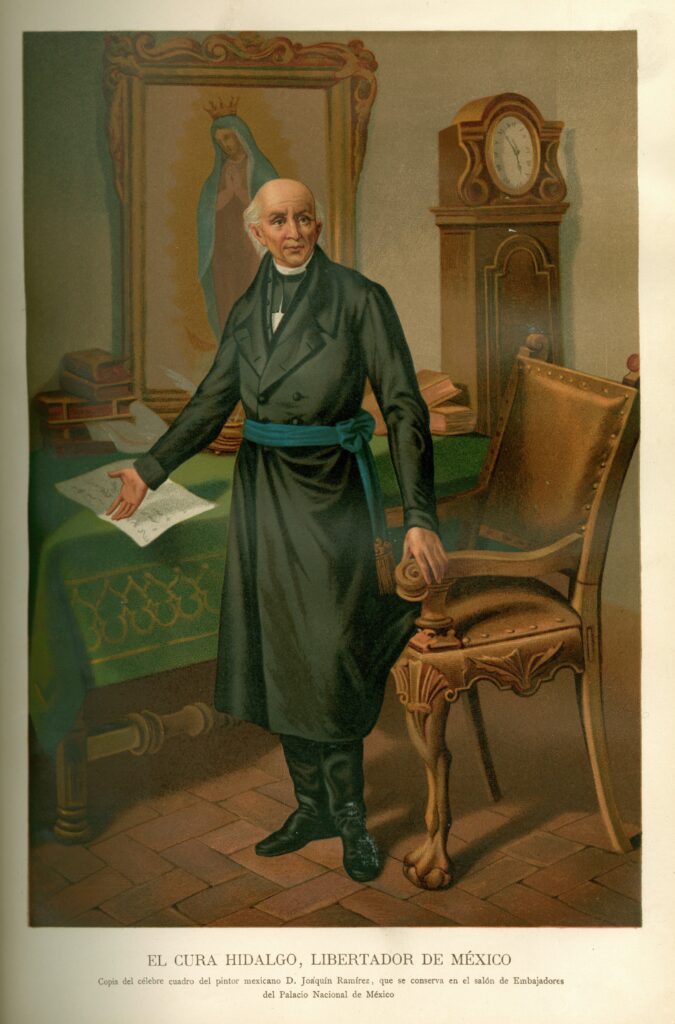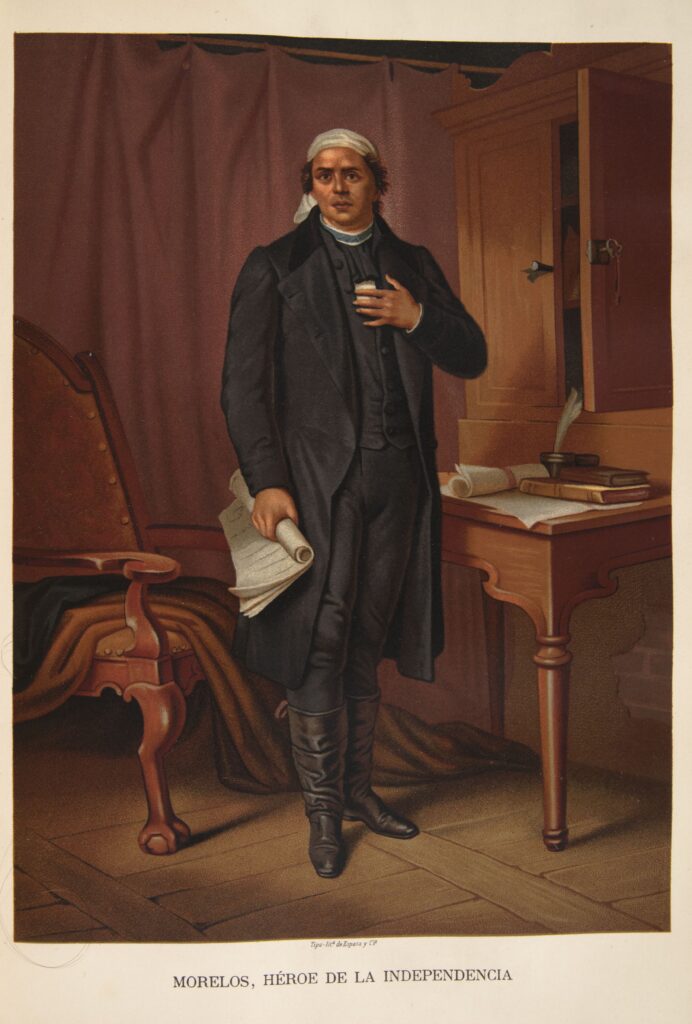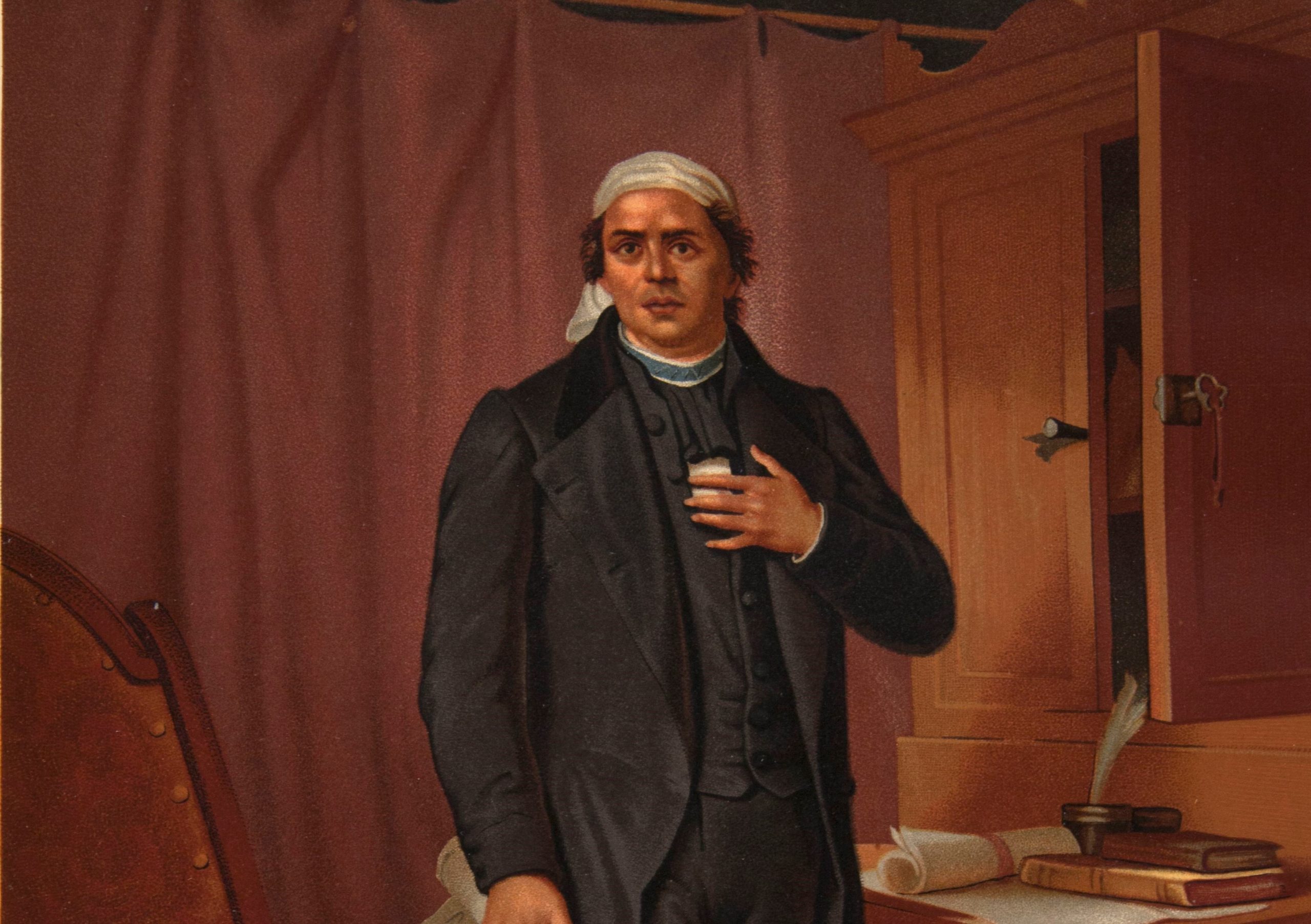Theme
Art History
Latinx History
Periods & Events
Mexican War of Independence
Skills & Document Types
Image Analysis
Visual Literacy
This activity is a way to provide a lesson on visual literacy within a history curriculum or to introduce a lesson or unit on the Mexican War of Independence. Explain that the backgrounds in formal portraits and what the figures wear are carefully chosen and often have symbolic meaning.
Materials – Available for Download in the Downloads Tab:
- A copy of the “Comparing Portraits” activity
- Copies of the portrait images used in this activity
Show your students the two portraits. Give students time with each portrait to generate and answer questions and write notes. Use the background material at the end of this activity whenever you think it will encourage students to ask more questions and think more about how to engage with the portraits.
Both reproductions are from the book México á través de los siglos (Mexico through the Centuries), by Vicente Riva Palacio and D. Joaquin Ramirez, 1887. The book is part of the Edward E. Ayer Collection. The first painting is titled El Cura Hidalgo, Libertador de México (The Priest Hidalgo, Liberator of Mexico). The second painting is titled Morelos, Héroe de la Independencia (Hero of Independence).
Click on the images for high-resolution versions that can be displayed for your class.
Portrait 1

Potential Questions
- Describe the figure in the painting. What is he wearing? What is he doing? Include as many details as possible.
- Every part of the painting has a meaning. What objects can you see? What is in the background of the painting? What do these details in the painting tell you about the figure? (If necessary help students identify details in the background such as the painting of the Virgin Mary and the grandfather clock, asking students what those details might signify.)
- Describe the expression the man’s face.
- What is written at the bottom of the painting? Do any words look familiar? Can you gain any more knowledge about the figure based on these words?
- What is one question you have about this painting or the figure in it?
Portrait 2

Potential Questions
- Describe the figure in the painting. What is he wearing? What is he doing? Include as many details as possible.
- What objects can you see? What is in the background of the painting? What does this tell you about the figure? (If necessary help students identify unique details in the painting such as the open cabinet door and the cloth draped across the chair, asking students what those details might signify.)
- Describe the expression on the man’s face.
- What is written at the bottom of the painting? Do any words look familiar? Can you gain any more knowledge about the figure based on these words?
- Does this painting answer any of the questions you had about the first painting? What questions do you have about this painting or the figure in it? How could you find answers to your questions?
- What are some similarities between the two portraits and what are some differences? How does this show the similarities and differences between the two men pictured? (The paintings show more similarities than differences and the differences are subtle. If necessary, help students identify differences by pointing out the different floors: Hidalgo’s floor is tile, while Morelos’ floor is wood. Also Hidalgo’s table has a cloth on it, while Morelos’ desk is plain wood. Hidalgo is older and balding; Morelos is younger and darker-skinned, etc.)
- What questions come up as you compare and contrast? How could you find answers to these questions?
Background
Miguel Hidalgo y Costilla, or Father Hidalgo, was a Roman Catholic priest who led the first Mexican fight for independence. He was a parish priest in Dolores, Guanajuato state. A member of a secret group that supported independence from Spain, Hidalgo publicly called on his parishioners to revolt on September 16, 1810. His famous speech from that day, the “Grito de Dolores” (Cry of Dolores), advocated not only independence but also racial equality and the redistribution of land. Hidalgo and his followers succeeded in their revolution for three months. Then, in early 1811, Hidalgo was captured. He was executed a few months later. The anniversary of Hidalgo’s speech is Mexico’s Independence Day.
José María Morelos y Pavón followed Father Hidalgo as the main leader of the Mexican independence movement. Morelos was also a priest but from a different part of the caste system than Hidalgo. He was mulato pardo, a person of American Indian and African descent. For three years, his troops controlled parts of southwestern Mexico. In 1814, while still fighting the war, Morelos called Mexico’s revolutionaries to the Congress of Chilpancingo, where they formally declared independence, formed a new government, and wrote a constitution. Morelos was caught the next year and executed.
Extension Activity
As an extended lesson on art history and to expand students’ visual literacy, show students a variety of portraits of political figures from the seventeenth and eighteenth centuries. (Some are included in the Additional Resources section.) Examine the similarity of stance and explore the importance of the items placed in the portraits. Discuss why leaders might have been portrayed in this way.
Words to Know
caste (casta) system | a social ranking system developed by the Spanish in Mexico to distinguish people based on their ethnic and racial ancestry
Additional Resources
- “José María Morelos,” Encyclopedia Britannica
- “Miguel Hidalgo y Costilla,” Encyclopedia Britannica
- Portrait of George Washington, Gilbert Stuart, National Portrait Gallery, Smithsonian Institution
- Portrait of Napoleon Bonaparte (The Emperor Napoleon in His Study at the Tuileries), Jacques-Louis David, National Gallery of Art, Washington, D.C.
- These portraits and related sources appear in the collection essay Caste and Politics in the Struggle for Mexican Independence.
Download the following materials below:
- A copy of the “Comparing Portraits” activity
- Copies of the portrait images used in this activity



